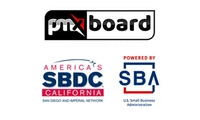Agile project management is built on flexibility, collaboration, and continuous improvement.
It helps teams adapt quickly to change and deliver results efficiently. While digital tools often dominate modern Agile environments, there’s a growing appreciation for the value of physical project management tools — boards, magnetic cards, and visual trackers that make workflows tangible, visible, and easier to engage with.
When integrated into an Agile workflow, these physical tools don’t replace technology — they complement it. They help teams visualize work, communicate better, and stay aligned in ways that software alone often can’t. Let’s explore how physical tools can elevate your Agile process.
1. Stronger Collaboration and Team Engagement
One of the cornerstones of Agile is teamwork, and physical project management tools naturally foster collaboration.
A shared board gives team members a central space to exchange ideas, brainstorm solutions, and visualize progress together. Standing around a board during daily stand-ups or sprint reviews creates a sense of unity and shared purpose that virtual dashboards can’t fully replicate.
The act of physically moving task cards or updating progress together strengthens engagement and keeps everyone accountable.
2. Enhanced Visibility and Shared Understanding
Transparency is essential for Agile success. With a physical board, everyone — from developers to managers — can instantly see the current status of tasks, priorities, and blockers.
Unlike digital platforms that hide details behind clicks and filters, a physical board offers a real-time visual overview that’s easy to interpret at a glance. This visibility helps teams make quicker, more informed decisions and keeps all members aligned on project goals.
3. Better Planning and Continuous Improvement
Agile emphasizes planning, reflection, and iteration — and physical tools make these activities more intuitive.
Teams can use visual boards to break down large goals into smaller, manageable steps. During sprint planning or retrospectives, the tactile nature of rearranging tasks or color-coded cards helps teams think critically about workflow efficiency and identify areas for improvement.
This hands-on approach encourages deeper collaboration and creative problem-solving.
4. Improved Time Management and Task Prioritization
With tasks and priorities displayed clearly on a wall or board, it’s easier for teams to focus on what matters most.
Physical tools bring attention to bottlenecks, dependencies, and priorities without the distraction of digital clutter. As team members see their workload visually balanced across columns or stages, they gain a better sense of pacing — which directly contributes to improved time management and sprint efficiency.
5. Flexibility and Adaptability in Real Time
Agile thrives on flexibility, and physical tools support this by enabling quick adjustments.
Need to shift priorities mid-sprint? Simply move the magnetic cards or rearrange columns. There’s no need for complicated setup changes or system permissions — just direct, immediate action.
This level of responsiveness allows teams to adapt instantly to new information or requirements while maintaining visibility and flow.
6. Simpler Tracking and Accountability
A physical board also serves as a living record of team progress.
It’s easy to see what’s been completed, what’s in progress, and what’s falling behind. That clarity creates a culture of accountability and ownership. Everyone knows what’s expected — and seeing that progress unfold in real time can be deeply motivating.
Final Thoughts
Agile teams succeed when they stay adaptable, communicative, and focused — and physical project management tools help make those qualities part of the everyday workflow.
By combining digital convenience with tangible, visual engagement, teams can achieve better collaboration, stronger accountability, and faster results.
At PMXBOARD, we design high-quality magnetic boards, Agile card sets, and visual tools that bring clarity and structure to Agile processes — helping teams transform strategy into visible, measurable progress.


